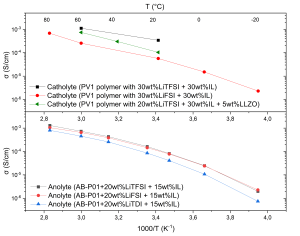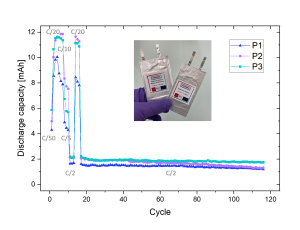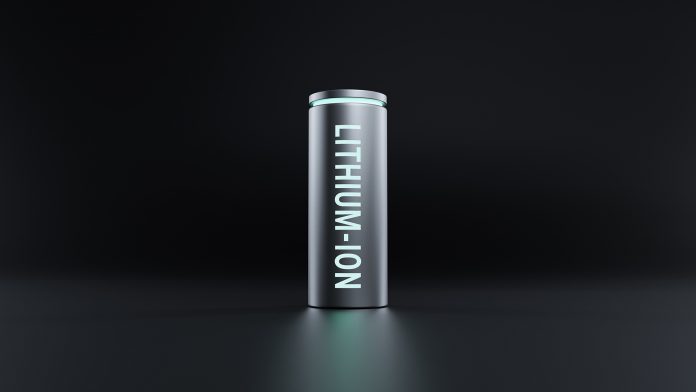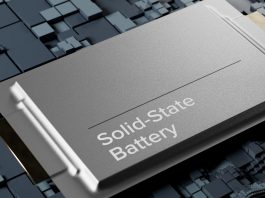Over four years, the EU-funded project ASTRABAT developed new all-solid-state lithium-ion batteries suitable to support the electric mobility growth in the following years.
To date, only 2% of the world’s passenger vehicles are electric due to factors such as limited battery autonomy and high costs. But a dramatic change is needed with the transport sector causing a quarter of Europe’s greenhouse gas emissions. However, current lithium-ion battery technology still has drawbacks, such as limited energy density, safety issues, unsustainable production processes, and end-of-life issues. To address this, the European research project ASTRABAT (All-Solid-sTate Reliable BATtery for 2025) developed a new solid-state lithium-ion battery for future electric vehicles and used the latest generation of materials. With a total budget of €8m, the project within a consortium of 14 partners and coordinated by CEA (French Alternative Energies and Atomic Energy Commission) has fostered strong partnerships and collaborations among academia, industry and research institutions across Europe.
A double polymer electrolyte specific to high energy density electrodes
ASTRABAT project‘s concept is based on developing a hybrid electrolyte, allowing it to address specifically electrolyte properties required at the anode side, cathode side and electrolyte separation part in order to increase the energy density and the safety.
The anode
In ASTRABAT, the usual graphite was replaced with silicon to triple the current energy density thanks to the theoretical gravimetric capacity of silicon (approximately 4200 mAh/g). However, the silicon material must be designed to accept several charge-discharge steps without strong embrittlement. In ASTRABAT, Nanosilicon coated by carbon (NANOMAKERS NMSiΩC99) has been selected. The work in ASTRABAT has been to design the hybrid electrolyte at the anode side (anolyte) to accept the silicon expansion during charge and discharge cycling appropriately. For this purpose, the ORMOCER® organic-inorganic material is considered and has been synthesised at up to one kg-batch at Fraunhofer-ISC.
The cathode
Based on lithium nickel manganese cobalt oxide (NMC), the cathode was designed to allow higher voltages with a reduced cobalt content, minimising the reliance on critical resources. Our work has selected the last generation of NMC with LiNi0.8Mn0.1Co0.1O2 (NMC 811). This type of NMC has a high nickel concentration and very low manganese and cobalt content. The result is higher energy density at a lower cost. Moreover, the discharge capacity of NMC811 can reach an upper voltage limit in the range of 4.2-4.5 V versus Li/Li+; therefore, the electrolyte development must address the ability to support this high voltage – the solid electrolyte.
The solid electrolyte
In conventional batteries, the electrolyte is liquid, and a separator is required to avoid contact between the two electrodes and short circuits. With a solid electrolyte, the separator is not needed anymore. To achieve favourable energy and power characteristics, a long lifespan, and cost-effectiveness in solid-state batteries, the solid electrolyte must have high lithium-ion conductivity, adequate chemical, electrochemical, and mechanical stability, and good processability. Given the low probability of finding a single material meeting all these criteria, the ASTRABAT innovative approach is based on combining two polymers, each tailored for the cathode and anode requirements. The flexibility of these polymers ensures prolonged cell life by maintaining robust contact between the electrodes and electrolytes. The hybrid polymer ORMOCER® developed by Fraunhofer ISC, comprising inorganic and organic nanodomains formed through a sol-gel reaction, is employed on the anode side. Daikin devised a hybrid electrolyte approach utilising a high voltage-stable, plasticised fluoropolymer electrolyte as a matrix for the catholyte. Incorporating ceramic additives (lithium lanthanum zirconium oxide (LLZO)) into the salt-to-plasticiser-to-matrix, even in small fractions, substantially enhances ionic conductivity.

Besides, polymer electrolyte formulation was completed with a Li-ion salt and appropriate ionic liquid used as a plasticiser. The formulation of polymeric electrolytes containing lithium salt and ionic liquid was optimised regarding ratio, compound and process for anolyte and catholyte. They exhibit high ionic conductivities, as demonstrated in Fig. 1.
ASTRABAT: From research towards manufacturing
ASTRABAT development has been done up to the demonstration of the whole cell. For this purpose, if they are not yet commercialised, all the materials used for cell manufacturing have been synthesised at a kilogramme scale. Long electrodes were processed on a semi-pilot line with electrode loading up to three mAh/cm² at CEA to build one Ah prototypes at Yunasko. Fig.2 demonstrates the cycling capability of three similar cell prototypes (12 mAh) cycled at 60°C and at different cycling rates.

To scale up the production of solid-state cells, and since several new materials are involved in the cells, it is crucial to optimise the successive steps required for all-solid-state cell assembly meticulously and to scale up on an industrial site fully. The challenge lies in producing solid-state batteries in a series while optimising their technical, economic, and environmental aspects. Life Cycle Assessment and innovative recycling methods have also been explored to ensure the long-term sustainability of ASTRABAT prototypes.
Within these four years, the ASTRABAT project has been a significant endeavour in pursuing electric mobility as the primary transport mode. Extensive research, collaboration, and innovation have been employed to address the challenges associated with solid-state batteries. However, crucial challenges like interfacial concerns and mechanical stability must be addressed before mass production to make solid-state batteries a viable and widely adopted technology in the future.
This project has received funding from the European Union’s Horizon 2020 research and innovation programme under grant agreement No 875029
Please note, this article will also appear in the seventeenth edition of our quarterly publication.










